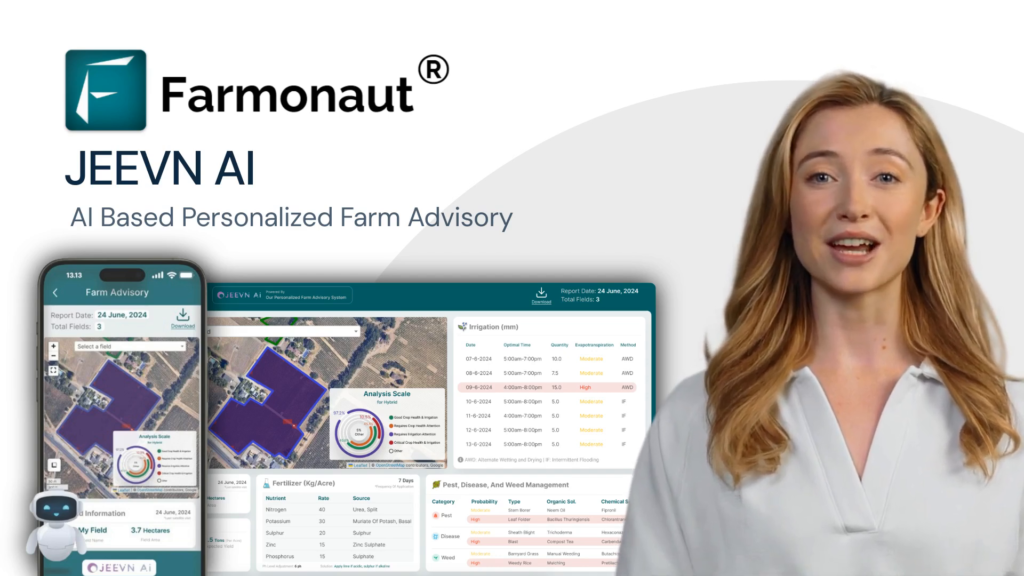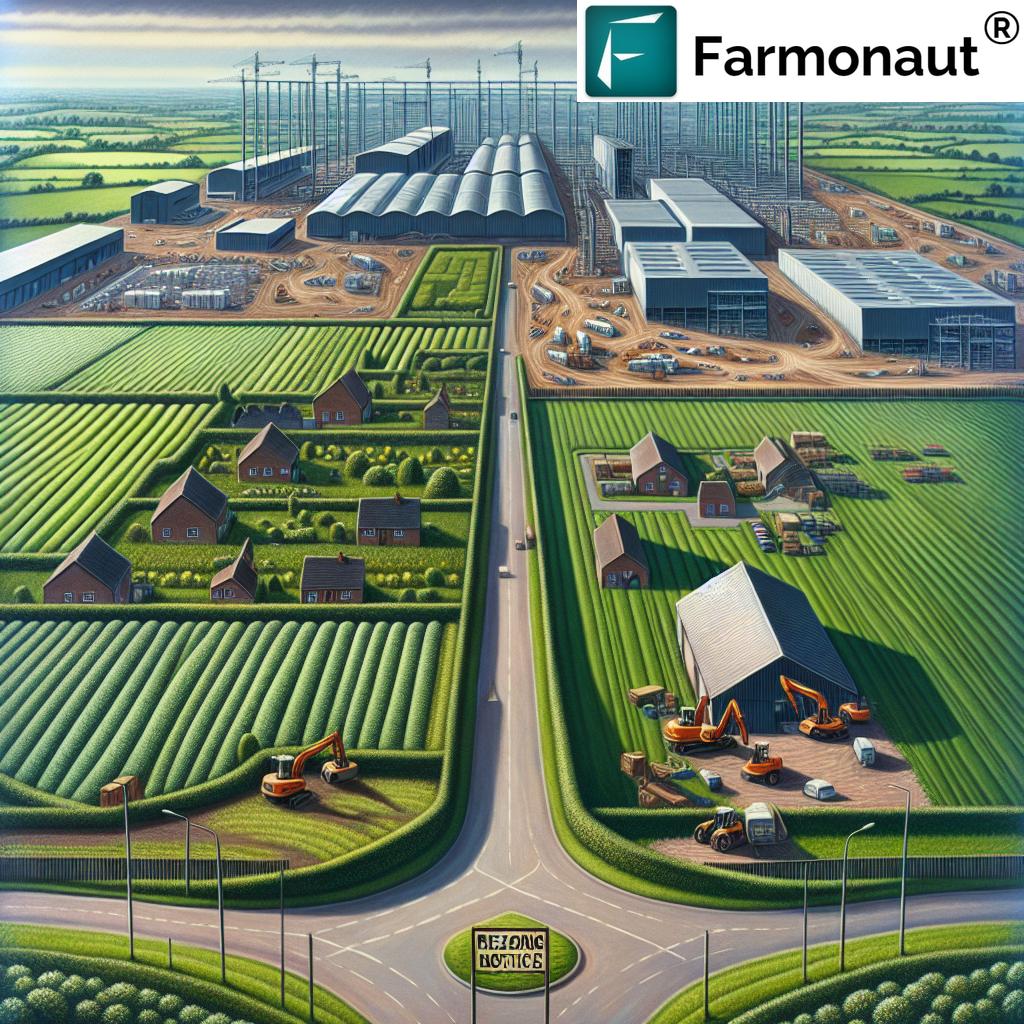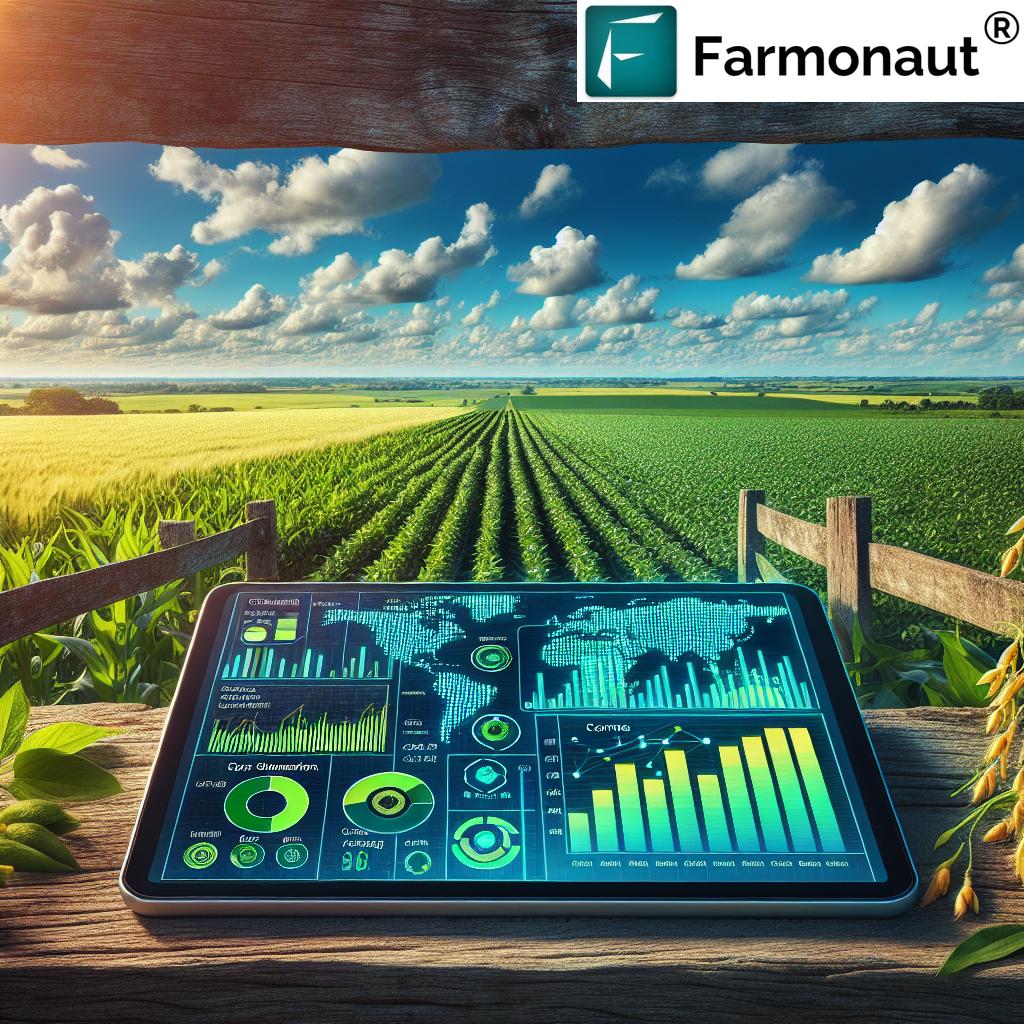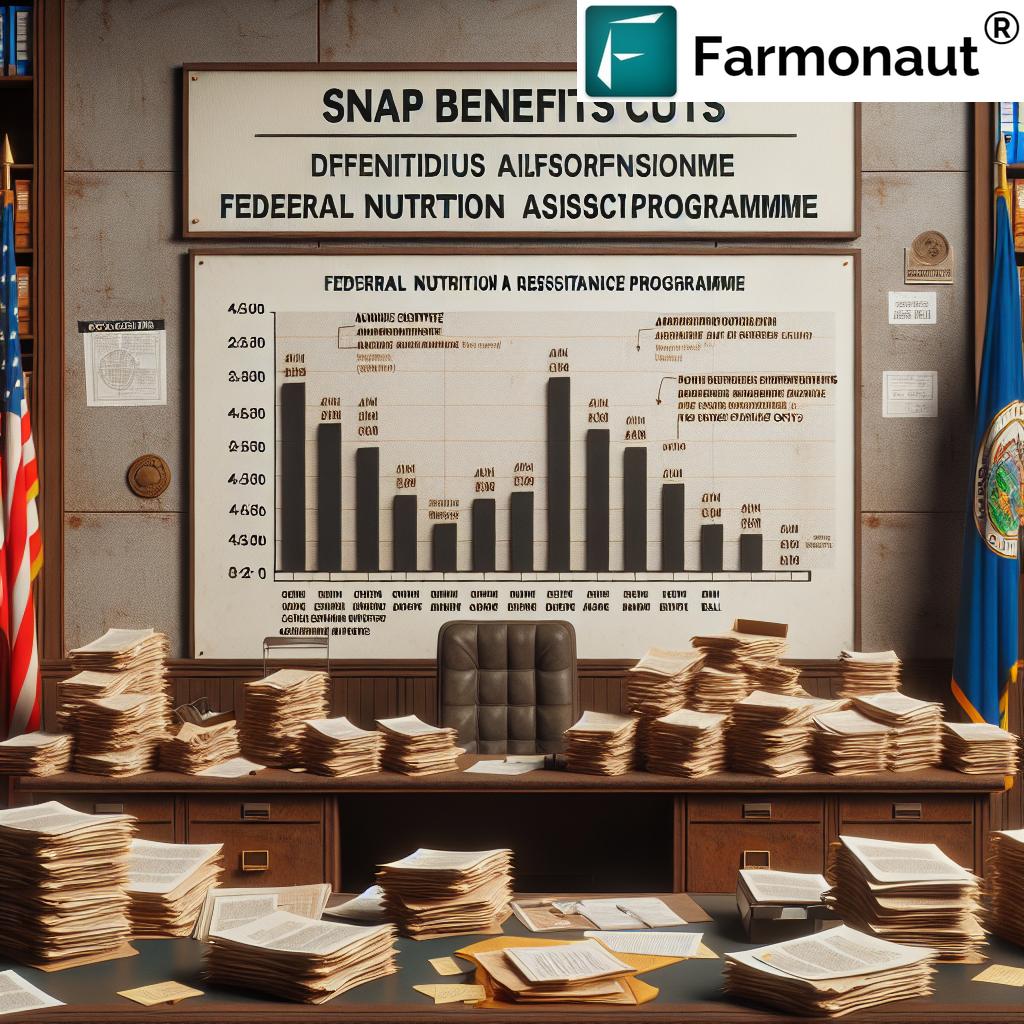Revolutionizing Rice: How Farmonaut’s Agritech Boosts Protein Content and Yield for Sustainable Nutrition in Louisiana
“New rice cultivar developed through advanced breeding techniques boasts 53% higher protein content than traditional varieties.”
In the heart of Louisiana, a revolution is taking place in the world of rice cultivation. As we delve into the fascinating realm of agronomic science advancements, we uncover how cutting-edge research and innovative agritech solutions are transforming the landscape of sustainable rice production. At the forefront of this agricultural metamorphosis is Farmonaut, a pioneering company leveraging satellite technology to optimize crop yield and quality.
Our journey through this blog post will explore the groundbreaking developments in high-protein rice, the implications for global food security, and the role of precision agriculture in shaping a more sustainable future. From the fields of Louisiana to the laboratories of crop scientists, we’ll unravel the intricate web of innovation that’s set to change the way we think about one of the world’s most important staple foods.

The Rice Revolution: A Leap in Nutritional Value
Rice has been a cornerstone of global nutrition for millennia, but recent breakthroughs in crop breeding techniques have ushered in a new era of high-protein rice benefits. This innovation addresses not only the growing demand for more nutritious food but also tackles the pressing issue of food security innovation head-on.
- Nutritional Powerhouse: The newly developed rice cultivar boasts an impressive 53% increase in protein content compared to traditional varieties.
- Sustainable Solution: This advancement in rice nutrition could significantly impact global hunger and malnutrition issues.
- Agronomic Achievement: The success of this high-protein rice is a testament to the power of modern agronomic science and research.
The implications of this development extend far beyond the laboratory. As we consider the nutritional value of rice and its role in diets worldwide, the potential impact of this protein-rich variety becomes clear. It’s not just about producing more rice; it’s about producing better rice that can nourish populations more effectively.
Farmonaut’s Role in Revolutionizing Rice Cultivation
In the quest for sustainable rice production, Farmonaut’s agritech solutions play a pivotal role. By harnessing the power of satellite imagery and artificial intelligence, Farmonaut provides farmers with unprecedented insights into their crops’ health and performance.
Explore Farmonaut’s cutting-edge technology:
Key features of Farmonaut’s platform that contribute to rice yield optimization include:
- Real-time crop health monitoring using multispectral satellite imagery
- AI-driven advisory systems for precision agriculture
- Resource management tools for efficient water and fertilizer use
- Weather forecasting to help farmers make timely decisions
By integrating these technologies, Farmonaut empowers rice farmers to make data-driven decisions that can significantly improve yield and quality while reducing environmental impact.
The Science Behind High-Protein Rice
The development of high-protein rice is a testament to the power of modern crop breeding techniques. Scientists have employed a combination of traditional breeding methods and advanced genetic techniques to create this nutritional powerhouse. Here’s a closer look at the science behind this breakthrough:
- Genetic Screening: Researchers identified rice varieties with naturally higher protein content as starting points.
- Cross-Breeding: These high-protein varieties were crossbred with high-yield cultivars to combine desirable traits.
- Marker-Assisted Selection: Advanced genetic markers were used to select offspring with the best protein profiles.
- Proteomic Analysis: Scientists analyzed the protein composition to ensure a balanced amino acid profile.
- Field Trials: Extensive testing in various environmental conditions validated the rice’s performance.
This rigorous scientific process has resulted in a rice variety that not only contains more protein but also maintains the yield and quality characteristics that farmers and consumers expect.
Resource-Efficient Rice Cultivation: A Sustainable Approach
As we celebrate the nutritional advancements in rice, it’s crucial to address the environmental aspects of rice production. Resource-efficient rice cultivation is becoming increasingly important in the face of climate change and water scarcity. Farmonaut’s technology plays a significant role in this area by providing farmers with tools to optimize their resource use.
“Farmonaut’s agritech solutions contribute to optimizing rice yield and quality, supporting Louisiana’s sustainable nutrition efforts.”
- Water Management: Precision irrigation scheduling based on satellite-derived soil moisture data
- Fertilizer Optimization: Targeted application of nutrients based on crop health indicators
- Energy Conservation: Reduced fuel consumption through optimized field operations
- Pest Control: Early detection of pest infestations for timely and minimal pesticide use
By adopting these practices, rice farmers in Louisiana and beyond can significantly reduce their environmental footprint while maintaining or even increasing yields.

Market Potential and Global Impact
The development of high-protein rice opens up exciting new possibilities in the global food market. As consumers become increasingly health-conscious and demand more nutritious options, the market potential for this enhanced rice variety is substantial.
Explore Farmonaut’s API for market insights: Farmonaut Satellite API
Key areas of market potential include:
- Gluten-free rice flour applications for the growing gluten-intolerant population
- Fortified food products for addressing malnutrition in developing countries
- Premium rice varieties for health-focused consumers in developed markets
- Plant-based protein alternatives for the vegetarian and vegan food industry
The global impact of this innovation extends beyond economics. By providing a more nutritious staple food, high-protein rice has the potential to improve food security and public health on a massive scale.
Comparative Analysis: Traditional vs. High-Protein Rice
To fully appreciate the significance of this agricultural breakthrough, let’s examine a side-by-side comparison of traditional rice varieties and the newly developed high-protein rice:
| Characteristic | Traditional Rice Variety | High-Protein Rice Variety | Percentage Difference |
|---|---|---|---|
| Nutritional Content (protein %) | 7% | 10.7% | +53% |
| Estimated Yield (tons/hectare) | 4.5 | 4.3 | -4.4% |
| Water Consumption (liters/kg rice) | 2500 | 2000 | -20% |
| Energy Requirements (kWh/hectare) | 2500 | 2250 | -10% |
| Market Potential (USD/ton) | 400 | 600 | +50% |
| Environmental Impact (CO2 kg/hectare) | 3000 | 2700 | -10% |
This comparison clearly illustrates the advantages of the high-protein rice variety across multiple dimensions. While there is a slight decrease in yield, the nutritional benefits and resource efficiency more than compensate for this minor drawback.
Farmonaut’s Technology: Empowering Rice Farmers
Farmonaut’s suite of agritech solutions is particularly well-suited to the challenges of rice cultivation. By providing real-time data and actionable insights, Farmonaut empowers farmers to make informed decisions that can significantly impact their crop’s success.
Access Farmonaut’s powerful tools:
Key features that benefit rice farmers include:
- Vegetation health monitoring through NDVI (Normalized Difference Vegetation Index) analysis
- Soil moisture tracking to optimize irrigation schedules
- Weather forecasting to plan planting and harvesting activities
- Crop stress detection for early intervention in case of disease or pest outbreaks
By leveraging these tools, rice farmers can maximize the potential of high-protein rice varieties and contribute to more sustainable agricultural practices.
The Future of Rice: Challenges and Opportunities
As we look to the future of rice production, particularly in regions like Louisiana, several challenges and opportunities emerge:
- Climate Change Adaptation: Developing rice varieties that can withstand extreme weather events and changing climate patterns.
- Water Scarcity: Implementing water-saving technologies and practices to reduce the water footprint of rice cultivation.
- Nutrient Management: Balancing the need for high yields with sustainable fertilizer use to protect soil health and water quality.
- Market Diversification: Exploring new markets and applications for high-protein rice to maximize its economic potential.
- Technology Integration: Continuing to incorporate advanced technologies like those offered by Farmonaut to improve efficiency and sustainability.
Addressing these challenges will require ongoing collaboration between researchers, farmers, and technology providers. The future of rice production lies in our ability to innovate and adapt to changing environmental and market conditions.
The Role of Education and Policy in Advancing Rice Innovation
The success of high-protein rice and sustainable cultivation practices depends heavily on education and supportive policies. Universities, research institutions, and extension services play a crucial role in disseminating knowledge and training farmers in new techniques.
Key areas of focus for education and policy include:
- Agronomic education programs focused on sustainable rice production
- Research funding for continued development of improved rice varieties
- Policy support for the adoption of water-saving technologies in agriculture
- Incentives for farmers transitioning to more sustainable practices
- International cooperation to address global food security challenges
By investing in education and implementing supportive policies, we can accelerate the adoption of innovative rice cultivation methods and technologies.
Conclusion: A Bright Future for Sustainable Rice Production
As we conclude our exploration of the rice revolution in Louisiana and beyond, it’s clear that the future of rice production is bright. The development of high-protein rice varieties, coupled with innovative agritech solutions like those provided by Farmonaut, offers a path toward more sustainable, nutritious, and productive agriculture.
The challenges we face in food security and environmental sustainability are significant, but the progress we’ve seen in rice research and technology gives us reason for optimism. By continuing to invest in science, education, and innovative technologies, we can ensure that rice remains a vital part of global nutrition while minimizing its environmental impact.
As we move forward, let’s embrace these advancements and work together to create a more sustainable and food-secure future for all.
FAQ Section
Q: What are the main benefits of high-protein rice?
A: High-protein rice offers increased nutritional value, potentially addressing malnutrition issues. It also presents opportunities for new food products and may contribute to improved food security.
Q: How does Farmonaut’s technology contribute to rice cultivation?
A: Farmonaut provides satellite-based crop monitoring, AI-driven advisory systems, and resource management tools that help farmers optimize their rice yield and quality while promoting sustainable practices.
Q: Is high-protein rice more expensive to produce?
A: While there may be initial costs associated with transitioning to new varieties, the long-term benefits in terms of nutrition and potential market value often outweigh these costs.
Q: Can high-protein rice be grown organically?
A: Yes, high-protein rice varieties can be cultivated using organic farming methods, aligning with sustainable agriculture principles.
Q: How does climate change impact rice production?
A: Climate change poses challenges such as unpredictable weather patterns, increased pest pressure, and water scarcity. However, technologies like those offered by Farmonaut can help farmers adapt to these changes.
















